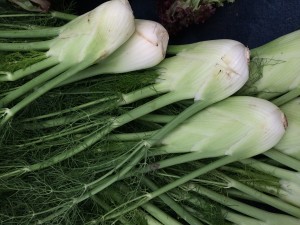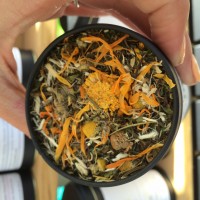It’s hard to believe it’s already September and Fall is upon us! While we may notice season changes a little less here in temperate San Francisco, the agricultural world lives by the seasons and there’s no denying that we are transitioning.
Soon the market will be full of apples, winter squash, and tender greens. But let’s not overlook one crop that also thrives in the fall and winter- mushrooms! With cooler temperatures and more moisture in the air, perfect growing conditions will soon dominate for mushrooms.
We are so lucky to have such a fabulous mushroom farm at our market, Far West Fungi. The Garrone family has been sustainably growing, distributing and marketing delicious mushrooms in the Bay Area for over 25 years! At their 60,000 square foot farm and facility in Moss Landing (right in the heart of Monterey Bay) they take great care to grow quality organic mushrooms. And the coastal fog gives the mushrooms that moisture they need to thrive.
What are mushrooms?

The mycelium of the fungi grow underground and the mushroom “fruits” are above ground.
Mushrooms are just one part of a fungal organism. They are like the fruit of a fungal mycelium (thread-like structure) that grows underground (or through whatever it’s munching on). Far West Fungi’s site says it best- “The mushrooms is to mycelium what the apple is to it’s tree.” When the time and conditions are right, a lump forms on the mycelium and then “fruits” into a mushroom. And though some mushrooms are poisonous, sometimes they can be perfectly delicious.
Varieties at the Market and What You Should Know
Just like there are many types of fruit, mushrooms come in a variety of shapes, sizes, colors and growth patterns. They also contain such a range and density of nutrients for a variety of health benefits unlike any other organism. Here is a little guide to at least help you out at the market.
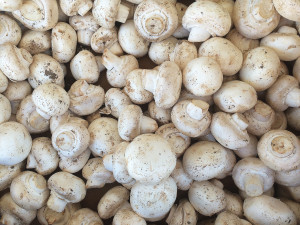
Crimini
Most of us may be familiar with the classic Button Mushroom, or Crimini. They are mild in taste, easy to slice and can be used with versatility on dishes such as pizzas, pastas, sandwiches, and salads.
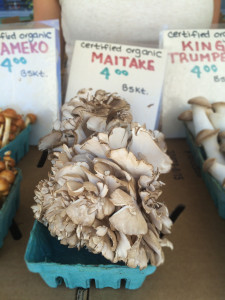
Maitake
Otherwise known as hen-of the-woods, this mushroom cluster can be grilled, sautéed or used in soups and stews. It can help build up your immune system and is traditionally used medicinally in Japan.
Shiitake are another meaty mushroom used often in Japanese cooking. They are versatile and the stems can be used for a good veggie stock. Studies show links between a protein that shiitake produce and cancer-prevention!

Tree Oysters/Pinks
Oysters are a delicious and meaty wild mushrooms which cooks very evenly when sautéed. The pinks are a variety of the tree oyster and happen to have a shorter shelf life so use ‘em up quickly. They have antioxidant properties and are rich in iron.
Also known as a King Oyster, these tasty and versatile mushrooms are cute and dense- they soak up a lot of flavor and have a pleasant abalone/scallop-like texture. They are high in protein and support healthy cholesterol levels.
This fuzzy looking creature is part of the Tooth fungus family. It is often compared to seafood when used in cooking. A special benefit of this mushroom is that it has been linked to nerve-cell growth in anti-dementia studies.
These gelatinous coated cuties are great for miso soups or a breakfast frittata. They have immune system strengthening properties as well as some anti-cancerous properties.
They are peppery and nutty and great for a stir-fry. They also contain many antioxidant properties and can be used medicinally for anti-inflammation.
For more resources on health benefits of mushrooms, check out this Infographic!
With the fall temperatures and higher possibility of rain, we are looking forward to seeing more varieties at the market this fall and winter like Hen of the Woods, Wine caps, Hedgehog mushrooms and more! Check out FWF’s Calendar online for a complete list.
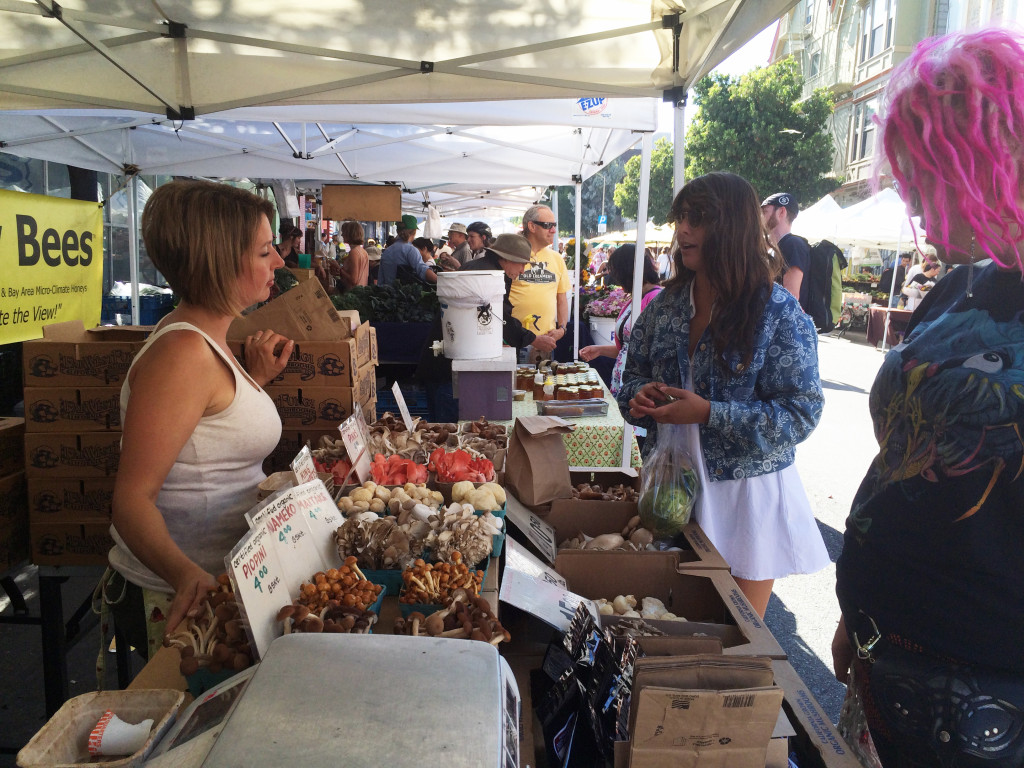
At the market. Look at all those varieties!
Please remember Far West Fungi does not attend the Market on every third Thursday of the month!



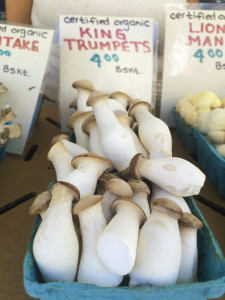
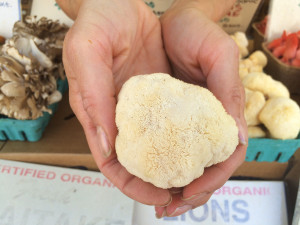
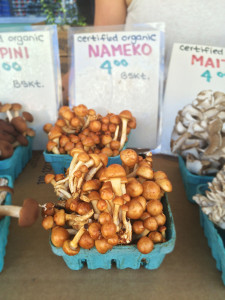

 Sure, we know who has our favorite pluots or who bakes a mean vegan brownie, but every vendor has their own story. Sometimes it’s difficult to imagine these people outside of the market setting, but many of our vendors have a lot going on outside of their market personas. Can you guess which vendor is a belly dancer or who works at an investment firm? The farmers market thing just seems so natural, but there are multiple layers to these proverbial onions!
Sure, we know who has our favorite pluots or who bakes a mean vegan brownie, but every vendor has their own story. Sometimes it’s difficult to imagine these people outside of the market setting, but many of our vendors have a lot going on outside of their market personas. Can you guess which vendor is a belly dancer or who works at an investment firm? The farmers market thing just seems so natural, but there are multiple layers to these proverbial onions! This week, we will highlight a dancer. She is also known as Maria Young, the vendor at the
This week, we will highlight a dancer. She is also known as Maria Young, the vendor at the  etting back in the swing of things and would like to begin dancing more. Maria stated, “I’m older and cannot move like I used to, but man, it just feels good.” While we wish her luck in finding the best West African Dance crew, you can still expect to see Maria and Crystal Eyes every week at MCM. All of the items that lay upon her beautifully-decorated table are naturally-found materials. She mainly sells crystals, jewelry, incense, sage, and palo santo at the market each Thursday from 4-8pm.
etting back in the swing of things and would like to begin dancing more. Maria stated, “I’m older and cannot move like I used to, but man, it just feels good.” While we wish her luck in finding the best West African Dance crew, you can still expect to see Maria and Crystal Eyes every week at MCM. All of the items that lay upon her beautifully-decorated table are naturally-found materials. She mainly sells crystals, jewelry, incense, sage, and palo santo at the market each Thursday from 4-8pm.


